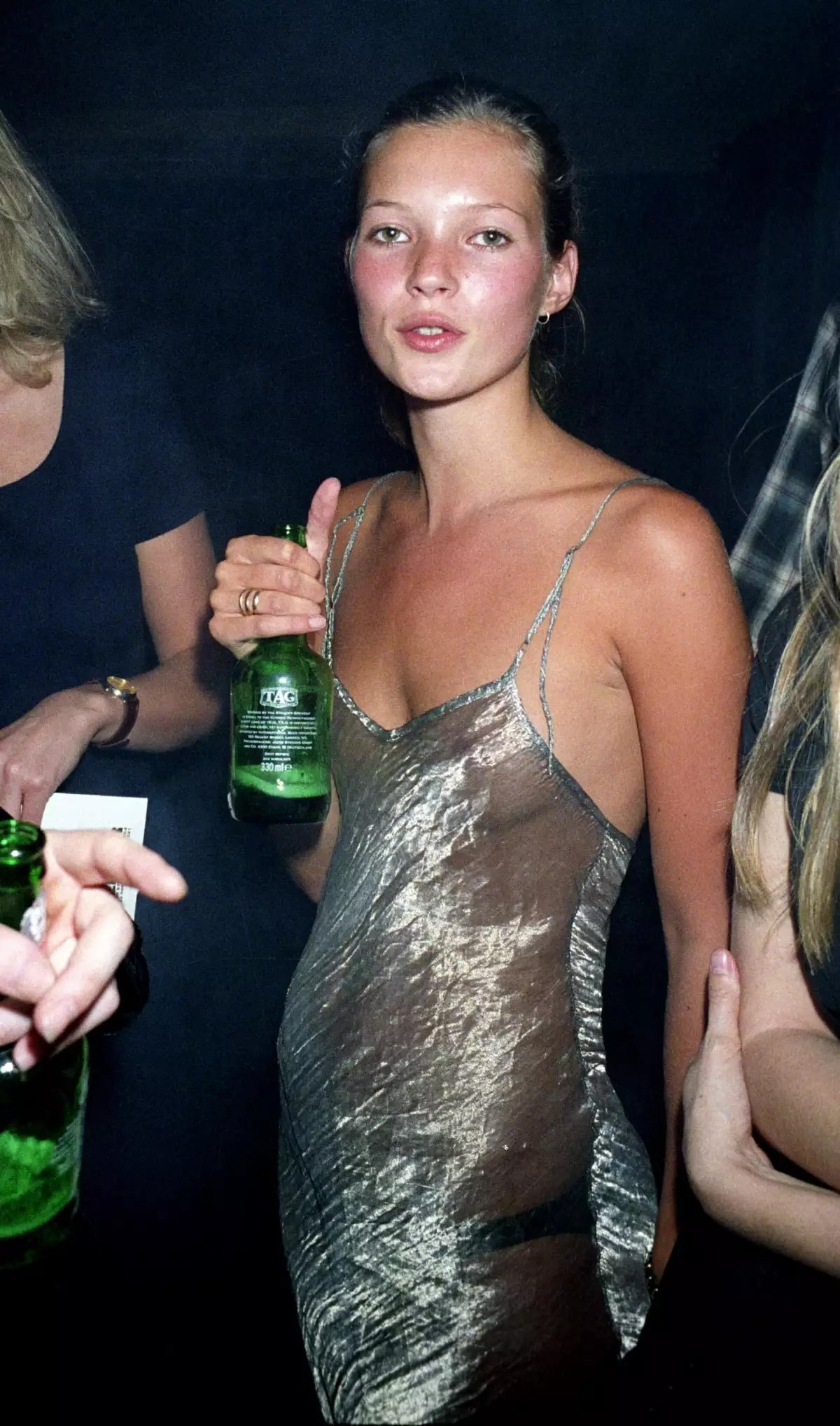Freedom Bounces Back
Is it OK? Is it embarrassing? Should I change? Do I have to? The troublesome area – or, should we say, areola – of unconcealed breasts, protruding nipples, and bouncing peaches keeps growing as the ‘naked dress’ and ‘sheer dressing’ trends push their way abreast of female empowerment.
Antonio Corradini’s “Modesty” (“La Pudicizia”) may seem like a prophetic figure in the history of female representation. One day, nudity will be mobilised by women to claim their right to liberty. Available via The Archaeologist. © All rights belong to their respective owners. No copyright infringement intended.
There’s something about exposed breasts that makes you speechless, isn’t there? It’s as though these two fruits of femininity absorb all symbolic power, reclaiming a woman’s right to make up her own mind. As it happens, movements like ‘Free the Nipple’ were conceived as the voice of emancipated womanhood. Airing the little bumps through sheer or high-stretch fabric became a hot topic in the 1990s, and it resurfaced later in the 2010s (BBC). In 2025, the trend is once again on the move, in the air, and… well… perhaps ever so slightly in the face.
Kate Moss in a sheer metallic slip dress with spaghetti straps, epitomizing '90s minimalism and the rise of naked dressing.
Courtesy of Alan Davidson/Shutterstock. Available via Elle © All rights belong to their respective owners. No copyright infringement intended.
As might be expected, controversy and candour go hand-in-hand where see-through clothing is concerned. Celebrities like Charli XCX, Paris Jackson, and Bella Hadid take the lead, sporting unapologetic, fresh wardrobes at Brit Awards, Paris Fashion Week, and the streets of New York. Brands like Prada Milan, Schiaparelli, and Simone Rocha continue to make punches at visibility and volume. For the past three years, these giants have been pairing the free nipple with metallic breastplates, denim cone caps, defiant lingerie, and diaphanous rosettes (Elle). More recently, transparency and lace have been very au courant too (Bustle). Take, for instance, Milan Fashion Week Spring/Summer 2025, or even New York Fashion Week Fall/Winter 2025. As we slowly pave our way to 2026, designers and brands continue to resurrect the ephemeral, naked beauty of the nymph. While some critics are prone to chastise the trend, others celebrate its tour de force (BBC).
So what is it about unhidden breasts that makes the fashion world go round? It seems that ambiguity is key: naked dressing runs through deep and troubled waters. As Alice Snedden puts it in her autobiographical article, “women [should be] able to determine when they want to be objectified and when they don’t. It’s [about] allowing women to decide how they want to be in the world. They can be sexual or not, but ultimately it’s their choice” (The Spinoff). Freeing the nipple means letting freedom bounce back to the frontline. It means embracing the in-betweenness of woman-Goddess and woman-object.
This is how the primeval man meets his help-mate in the USSR animation “I Give You a Star” (1974). With long hair for cover, The Woman sits sweetly in a seashell like the new-born Venus. Round and desirable, she will unleash Man’s inner poet. Whose voice are we liberating when we expose our ‘gifts’ to another? Image available via YouTube. © All rights belong to their respective owners. No copyright infringement intended.
But does the theory fit into practice? Is exposure actually synonymous with expression – rather than vulnerability, for instance? Without labels like ‘proper’ and ‘demure’, or ‘improper’ and ‘vulgar’, we are left with something indescribable. So sometimes, the old-fashioned way feels safer. Etiquette experts like Sara Jane Ho, for example, advise discretion, because clearly defined protrusions can be distracting to others (Mind Your Manners). Granted, the entire point – in every sense of the word – of the Free Nipple movement and naked dress is to disrupt public opinion and throw oneself beyond its reach. But here’s the tricky thing. Whether we act under the impulse to challenge society or to reshape it, neither thing can be successfully achieved if our chest-forward leaps are measured in cleavage chasms. To be heard, you have to be understood, too.
Besides, the experience of emancipation isn’t always the same for everyone. When a sculpted model floats on a runway, she is insulated by rivers of staff and security guards. But what happens when a girl in some rural neighbourhood decides to take a stroll, or go to her dancing class wearing nothing but a polyester rose blouse? Will she be seen for anything other than her breasts? Will she further the feminist cause, or aggravate the impasse of voyeurism? All of this will depend greatly on where she lives, and who her neighbours and friends are. What is thought to be bold and beautiful may turn out to be more complicated, especially in a deserted street.
All things considered, the freedom to articulate one’s ideas corporeally is still in need of advocacy. Unfortunately, deciding for oneself isn’t always a right; for some, it’s still a hard-earned privilege. Even in the clouds of enlightened artistry, the male gaze might make a tear. Of course, for trends like sheer dressing to thrive, the struggle between scopophilia and self-determination must be ongoing. Otherwise there’s nothing to express or to claim. But, in order for people not to get hurt in the process, designers and wearers have to work together to make space for conversation.
And on this modest note, she closed her computer, threw on a viscose shirt and went to the grocery store, conveniently forgetting her bra at home. After all, it’s 25˚C.



